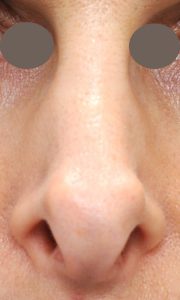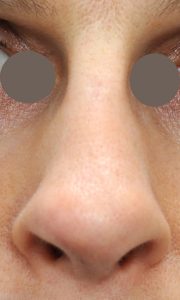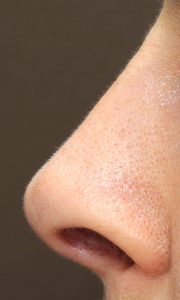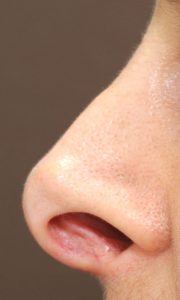How Form and Function Cooperate in Rhinoplasty
This very nice lady (whose identity is protected but whose nose is shown in the accompanying 4 photographs) is a perfect example of several of the principles that I teach and practice.
A surgery many years ago, reducing the height of her bridge and tip, collapsed the middle third of her nose, impairing her internal valves, and collapsed the nostrils, impairing her external valves. My airflow research has shown that these 2 maneuvers alone cut her original airway by 75 percent. As much as anything, the intolerable airway obstruction drove her to seek secondary correction many years later.
In addition, the loss of support in her nostrils allowed the skin to shrink upward, making the nostrils themselves look very large and peculiar.
My surgery was very limited, as it always is, only to the areas that bothered her: the bridge, the tip, and the nostrils. All incisions were internal. No other anatomy was disturbed, so recovery was relatively quick and the chance of producing new deformities was virtually zero – – in complete distinction to what happens with open rhinoplasty, where the entire nose is disassembled, extensively reorganized, and then braced with too many grafts and sutures.
I used cartilage from her septum to straighten her bridge and recontour her tip, and supported her sidewalls with septal cartilage grafts that braced the internal valves. I then took “composite” cartilage and skin units from one of her ears and placed them on the insides of her nostrils to replace the shrunken skin and bring her nostrils down to a normal height. The result is a nose that looks unoperated, with airflow that is at least 4 times what it was preoperatively. These are early (6 months) photographs, so the nose is still swollen and will narrow and define even more over the next 6 months.
In rhinoplasty, form and function are always interconnected. The trick is to understand and recognize the deformities and know how to correct them with the least recovery and the greatest airflow improvement for
the patient.



